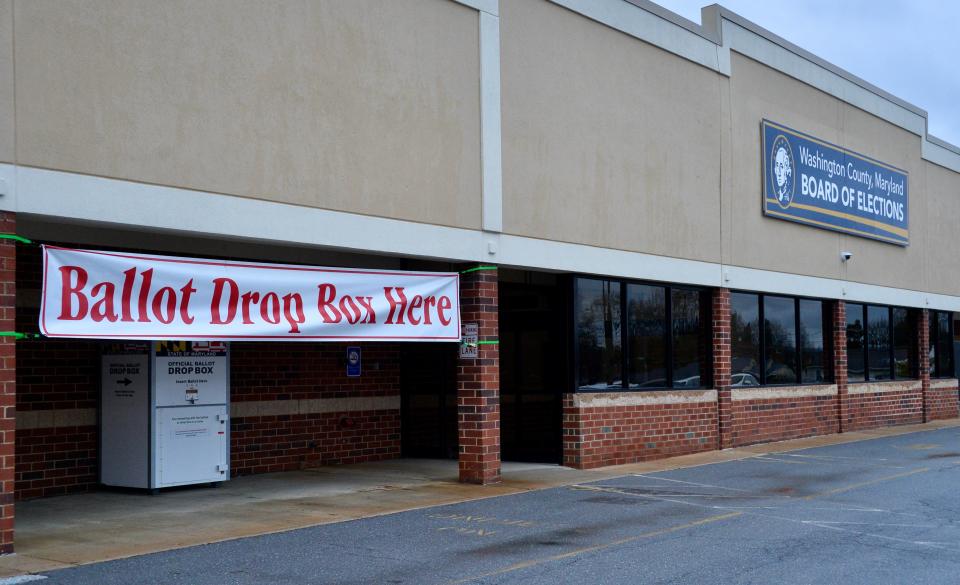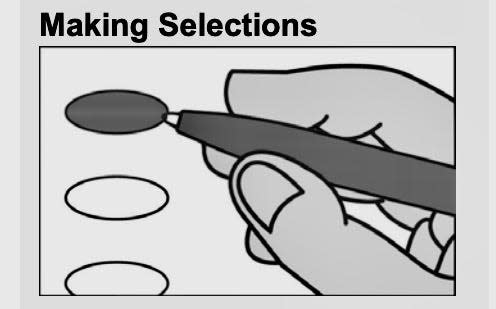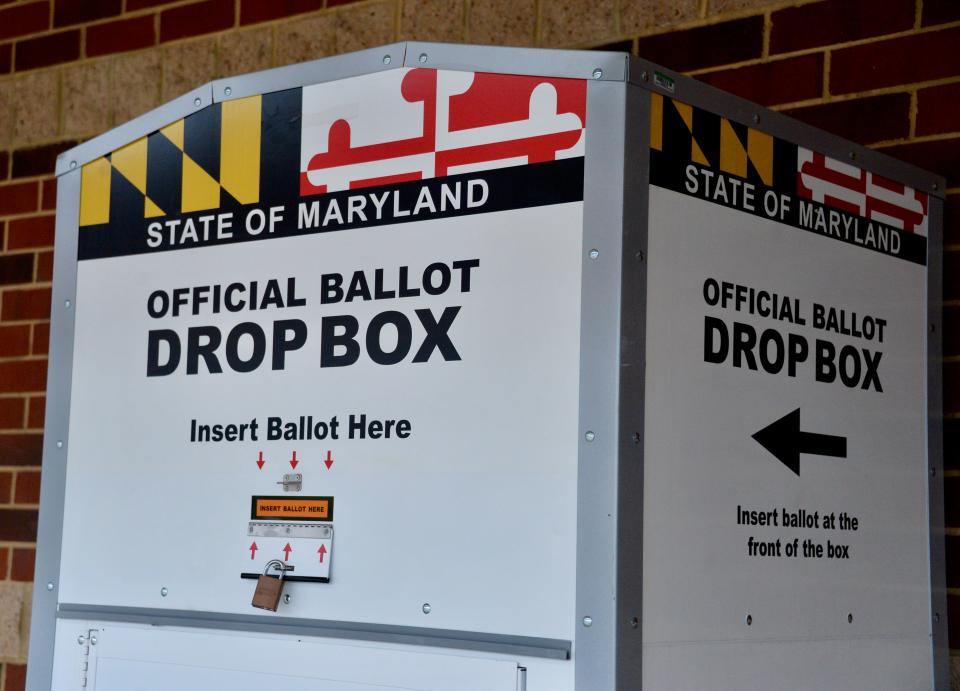Do's and don'ts when filling out Maryland mail-in ballots
Mail-in ballots have already begun being issued in Washington County, with some already being returned for this year's presidential primary.
By now, many voters have experience with mail-in ballots. However, if those ballots aren't filled in properly and the voter's oath on the envelope signed, issues can arise down the road.
Washington County Election Director Barry Jackson said local election workers and Board of Elections members do what they can to address some of those issues to ensure ballots get counted. But there have been some cases where a voter's ballot isn't counted or part of it isn't counted because the voter's intent was not clear or the ballot is ineligible for some reason, he said.
Local impact: Resources for Tri-State businesses, nonprofits affected by Key Bridge collapse
Mail-in paper ballots are scanned by machines to tally their results, if the ballots are returned properly (more on that further down).
During the 2022 general election, 33 Washington County mail-in ballots were rejected, according to Jackson.
For that election, 11,654 Washington County ballots were mailed out and 86.25% of those were received by election officials, according to the Maryland State Board of Elections' 2022 General Election Report.

Of the 907 provisional ballots the county election board received, 773 were accepted in full, 89 were accepted in part and 45 were rejected, according to Jackson.
Provisional ballots are provided to voters, during early voting or on Election Day, who could not be issued a regular ballot for any number of reasons, Jackson said. Those reasons may include the person went to the wrong voting precinct.
Election 2024: Republican congressional candidates weigh in on Western Maryland's top priorities.
Which ink causes the fewest problems for ballot scanners?
This is not a flashback to those old standardized school tests that required a No. 2 pencil.
Election officials prefer voters use black ballpoint ink to fill in those ovals on their ballots.
The machines that scan the ballots might not pick up pencil, and the lead from the pencil could get on the scanner lens, causing problems, Jackson said. Blue ink also might not get picked up by the scanners.
So ballots filled out with pencil and any with blue ink that cause problems are duplicated, with a bipartisan team of election judges overseeing the process, Jackson said. That duplication is either done via a voting machine or with black ink.
E-mailed ballots returned by voters, who must print the ballot to mail it in, are duplicated because they need to be on the proper paper for the scanners to read them, Jackson said.
Election 2024: Democratic congressional candidates weigh in on Western Maryland's top priorities.
Make sure you fill in those ovals

The oval for a voter's chosen candidate should be completely blackened within the lines.
When voters mark ovals with X's or checkmarks instead of coloring them in, those ballots have to be duplicated, Jackson said.
Don't make any other marks on the ballot and try not to get stains on the ballot, because that also can affect the scanner's ability to read the ballot, Jackson said.
If a voter makes an extra mark in or around an oval — beyond blackening the oval for the candidate of their choice — the scanner may kick the mail-in ballot out and election board members will try to determine a voter's intent.
Sometimes it appears people tap their pen inside an oval, creating a mark, and election officials don't know whether that is an intentional vote.
There are some races, such as for Hagerstown City Council and the Washington County Board of Education, where people can cast votes for more than one candidate. Voters don't always choose the maximum number of candidates permitted in such races.
That can leave election board members trying to determine whether a voter meant to fill in that other oval.
If a voter fills out one oval or marks the oval with a checkmark and the coloring or checkmark carries over to another oval, the ballot scanner may count both those ovals as votes if that's a race that allows more than one vote, Jackson said. And that ballot goes through.
If there's only to be one vote, the scanner might kick it out as an over vote. If a person over votes for a particular race, then none of the votes cast for that race will count, Jackson said.
If there's a mark between two ovals, but is closer to one oval, board members will review that ballot to see if they can determine the voter's intent.
"Obviously, the voter is not there to speak for themselves. The board, unfortunately, has to make that decision for the voter," Jackson said.
Board members have guidelines from the Maryland Board of Elections about voter intent to help them decide what to do, Jackson said. There are stringent rules about accepting ballots and votes, so there's as little subjectiveness as possible, he said.
There also are instances where the board cannot determine intent and won't accept a vote for a particular race.
Schools dismissing early for eclipse: Some school districts are dismissing students early for April 8 solar eclipse
Did you put your ballot in the right envelope?
Each mail-in ballot and the return envelope it comes with have a tracking number on them.
There have been cases where there are multiple mail-in ballots being cast in a household and ballots are not placed in the right envelopes. When that happens, election board officials will determine which ballot goes with which envelope and may accept the ballots as long as the oaths have been signed.
If the oath wasn't signed, election workers will try to call that voter to get them to come in and sign the oath, Jackson said. The deadline to get those oaths signed is 10 a.m. on May 24.
Rowland column: You just got a text message from your boyfriend. What is he trying to tell you?
Ballot canvassing starts before Election Day
Board members will begin canvassing returned mail-in ballots before Election Day.
Canvassing is when election workers review the received ballot envelopes to make sure the oaths are signed and the ballots are scanned so the results are tallied. Canvassing also includes when election board members have to review and make decisions about whether votes count for a particular race if there is a problem with markings on the ballot.
The first canvassing date is April 22.
All mail-in ballots counted before Election Day will become part of Election Day results released that night, Jackson said.
Canvassing of provisional ballots begins May 22.
Canvassing, done at the election board's headquarters in Halfway, is open to the public. Candidates, campaign and party officials and members of the media sometimes attend canvassing.
Man sentenced for blasting caps in home: Maryland man gets time served after plea in case where blasting caps found in basement
How to know if your ballot was accepted
Voters who mail in their ballots can check the state election board's website to see if their ballot was received, accepted or rejected.
If it was rejected, there's no second chance to cast a ballot, Jackson said.
When is the eclipse in Hagerstown?: When is the solar eclipse in Hagerstown, Washington County? Search by ZIP code
Deadlines, how to send in your mail-in ballot
Mail-in ballots can continue to be counted after Election Day as long as they are postmarked or dropped off by 8 p.m. on Election Day, May 14.
Mail-in ballots can be mailed, brought into a county polling place on Election Day, or dropped off at one of the county's eight drop boxes by Election Day.
Those drop boxes are outside the election board headquarters at 17718 Virginia Ave. in Halfway; the Washington County Free Library in downtown Hagerstown; or town halls in Hancock, Clear Spring, Williamsport, Keedysville, Boonsboro and Smithsburg.

Vote for the Student of the Week: Herald-Mail Student of the Week: See this week's poll
It's not too late to request a mail-in ballot
The deadline to apply for a mail-in ballot is May 7, though voters also can request one in person on Election Day, Jackson said. Those ballots still have to be postmarked or dropped off by Election Day.
Voters also can request a mail-in ballot via email by May 10.
Not everyone who has requested a mail-in ballot has received them yet.
Applications for ballots that only contain nonpartisan races are expected to be sent out this week, Jackson said. Those are ballots that go to voters that are registered, but not with the Democratic or Republican parties.
Nonpartisan races include ones for the Hagerstown mayoral post, Hagerstown City Council and the county school board.
Mail-in ballots also will continue to be sent out as applications come in, including for newly registered voters.
April 23 is the deadline for Maryland residents to register to vote in the primary election.
For those who want to vote in person, early voting is May 2 through May 9.
This article originally appeared on The Herald-Mail: Do's and don'ts when filling out Maryland mail-in ballots

